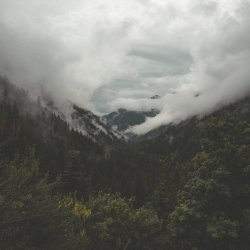We have to do more.

Climate Change

In October of 2018, the Intergovernmental Panel on Climate Change released a report and did something they'd never done before: demand action.
They declared that the governments of the world needed to launch a World War II scaled initiative aimed at retooling our energy and transportation infrastructure to cut carbon emissions by 45% in the next decade. Half our electricity infrastructure needs to be non-emitting renewables by 2030. Half of the car trips need to be fully electric vehicles, or not happen at all. Home gas use needs to be cut in half. Industry emissions: cut in half. We've got one decade. If we fail, we face catastrophic consequences.
The problem is global, but the solution is local.
Even if we get international treaties, even if we get a Green New Deal, we still need to restructure our infrastructure right here in Bloomington, Indiana. We can't wait for the national action. We have to get to work. Ten years is not a lot of time.
We know what we have to do.
READ MORE
What must we do?

We need to build a transportation system that allows people to get around with out driving their cars. Electric cars are not the solution. Adoption can't come fast enough, and even if it did switching to an electric car is just transferring the emissions to the grid and industry, not eliminating them. We need to make it so people can get around with out driving. We need to build public transit, biking, and walking infrastructure that makes the choice not to drive easy and pleasurable.
Indiana's grid is so heavily supported by coal that, right now, if you drive a pure electric car charged from the grid, your emissions are ultimately higher than if you were driving a hybrid. So we need to get renewables on the grid any way we can. The primary barrier to installing rooftop solar for many homeowners is the financing. The city can and should provide that financing. And we can finance other energy improvements as well, like home energy retrofits. We can also support the installation of microgrids on major developments all over town.
We've got limited resources, so we're going to have to plot the path to the infrastructure we need, and then we're going to have to make very hard choices about where we put our resources to have the greatest impact we can.
READ MORE